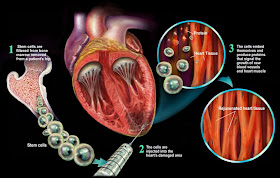I’m a big fan of the show House, which ran on the Fox TV network for 8 years and is now on Netflix. Gregory House, masterfully played by actor Hugh Laurie, is an brilliant doctor who diagnoses patients whose bewildering symptoms have stymied other doctors. He’s also unbelievably rude: he insults and harrasses his patients and his fellow doctors alike, but they tolerate him - usually - because he’s almost always right.
I doubt that any real doctor is as rude as House. But like any group of professionals, doctors vary widely in their people skills. Recently, though, Medicare has started using patient satisfaction as a component of how it pays hospitals. In response, some doctors now try harder to give patients what they want, rather than what they need, as described last year by Kai Falkenberg at Forbes. On Medscape recently, William Sonnenberg wrote that “patient satisfaction is overrated” and said of Press Ganey, a company that runs patient satisfaction surveys:
“Press Ganey has become a bigger threat to the practice of good medicine than trial lawyers.”
You can find Medicare's hospital survey online. Dr. House would fail, big time.
What’s wrong with giving patients what they want? It turns out that patient satisfaction is tied to higher costs and, even worse, a higher death rate. A large survey covering 52,000 patients, published by a team led by Joshua Fenton at the University of California-Davis found that the most satisfied patients not only spent about 9% more than average, but had a 26% higher death rate. From the study: “The most satisfied patients had statistically significantly greater mortality risk compared with the least satisfied patients.”
For patients who think a nice doctor is a good doctor, this might come as very disappointing news. Was the effect due to patients already in poor health, who might be more inclined to like their doctors? No: when the researchers excluded the sickest patients and looked only at the healthier ones, the risk of dying was even higher. (It’s important to note here that this is relative risk; only 3.8% of patients died during the six-year followup to the study.)
Over at The Daily Beast last week, Daniela Drake summarized this trend as “You can’t Yelp your doctor.” (Not that Yelp isn’t useful for finding a good pizza place.) And yet, as Scott Hensley reported on the NPR blog Shots, online ratings of doctors are becoming very popular, even though they don’t measure how good a doctor is at diagnosing and treating illness.
This study has implications for so-called “alternative medicine” as well. Patients who frequent alternative providers such as acupuncturists, homeopaths, and naturopaths often report high levels of satisfaction, as if satisfaction correlated with better care. Now we have a large study showing that this is simply not the case.
It makes sense that patient satisfaction is related to cost: patients often demand treatments that they don’t need, and “Patient requests have also been shown to have a powerful influence on physician prescribing behavior”, as Fenton and colleagues reported. It is less clear why the most satisfied patients died at higher rates.
Obviously, doctors don’t need to act like Dr. House to be effective. But doctors need to be able to tell patients things they don’t want to hear. Just because you want an antibiotic for your sore throat or your child’s ear ache doesn’t mean you should get one. The UC Davis study demonstrates that using patient satisfaction surveys to adjust reimbursement rates, as Medicare is currently doing, is a recipe for higher costs and lower quality of care.
Given a choice between a friendly doctor who gives me what I want and a brilliant doctor who gives me what I need, I’ll take Dr. House.


